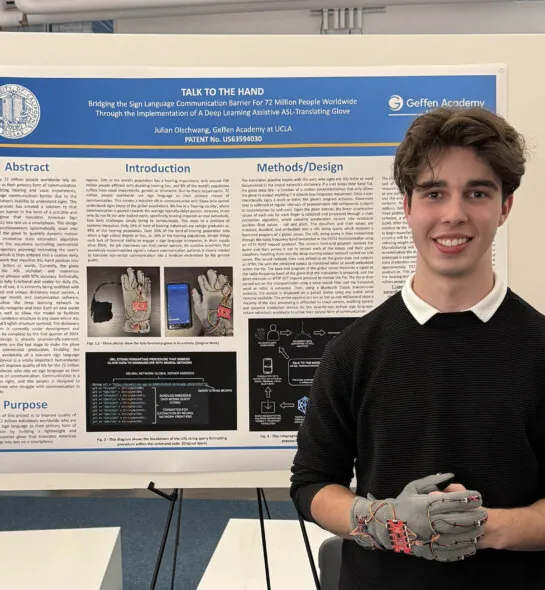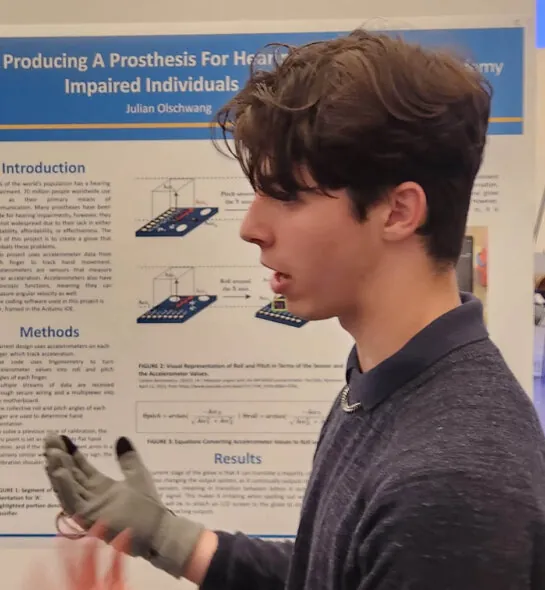Deeper Dive
My project, Talk To The Hand, is a lightweight, portable, and affordable glove that, when worn, translates American Sign Language into text on a smartphone. The glove is designed to serve as an intermediary for the millions of people worldwide who rely on sign language as their primary form of communication due to disabling hearing and vocal impairments. Without this invention, a considerable proportion of the population is forced to rely on interpreters as a result of the general population's inability to understand signs. However, due to the considerable financial burden associated with hiring interpreters and the fact that one cannot always have an interpreter with them, the majority of the sign-language reliant population, unfortunately, tends to forgo communication entirely. I learned about this societal phenomenon at an early age from my sixth-grade teacher who worked nights as a tutor for deaf students, and I found it unacceptable that we live in a society where communication isn’t a guaranteed human right. I then spent the better part of five years developing my project into the fully functional system it is today.
Talk To The Hand was an entirely self-motivated and self-started venture that I began in eighth grade. This means that a large portion of the time spent on this project was spent teaching myself the skills necessary to succeed. For example, to this day, I have never taken an official engineering or computer science course. However, I took an alternative route and taught myself everything I needed to succeed, from five programming languages and near-fluency in ASL to artificial intelligence architecture and sewing.
My work aims to eliminate a pervasive communication barrier that bars over seventy-two million people worldwide from communicative ease. The main reason why very little has been done to combat said barrier is the lack of awareness towards the societal inequities that arise from this phenomenon. Only 24% of hard-of-hearing individuals are college graduates as opposed to the 39% of the hearing population. Over 50% of the hard-of-hearing population has only attained a high school degree or less as opposed to the 38% of the hearing population. Things as simple as not being able to afford a sign language interpreter (who are in severe shortage as of 2014) for a job interview cost hearing-impaired individuals possible careers and livelihoods. The commercial availability of my work, a streamlined and efficient real-time translation system, creates equal opportunity for sign language-reliant individuals and will drastically improve quality of life for a very marginalized and ignored segment of our global population.



